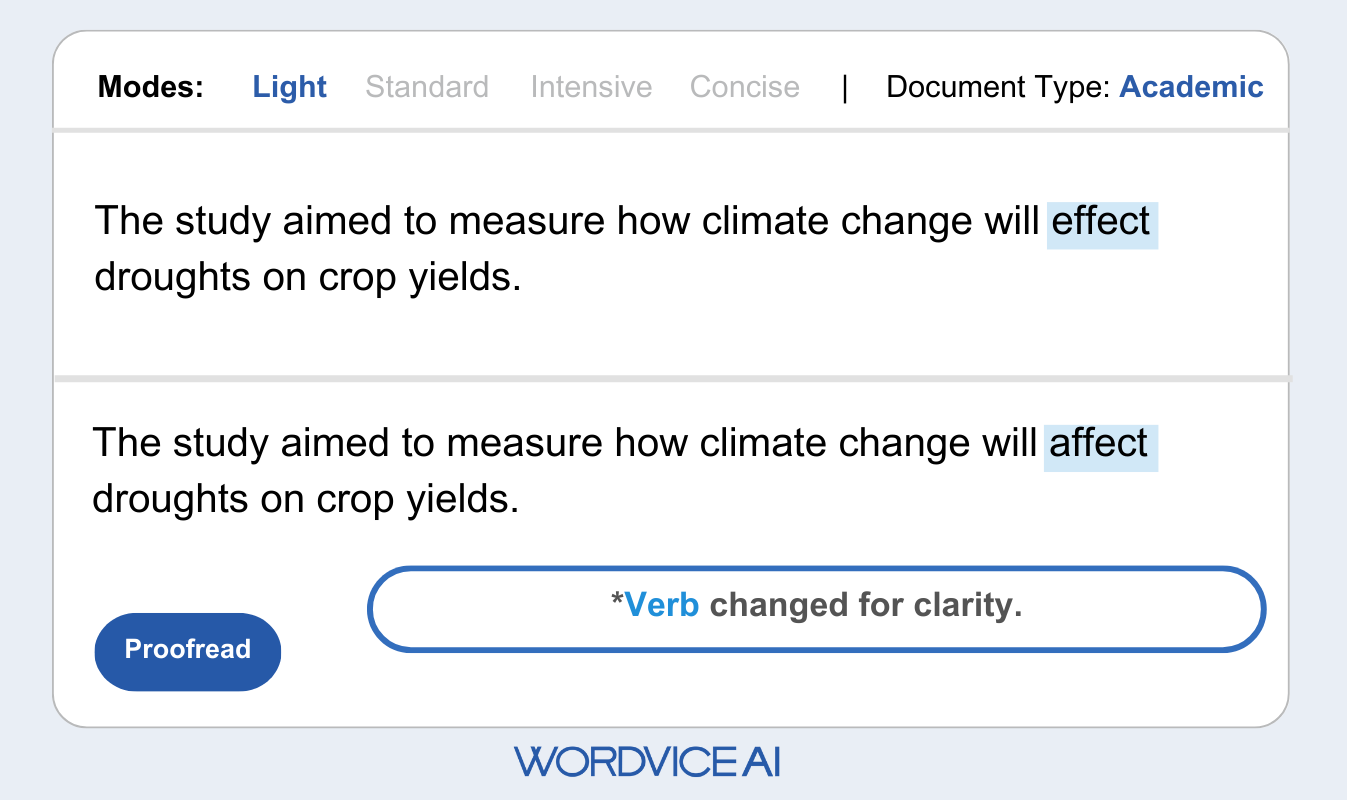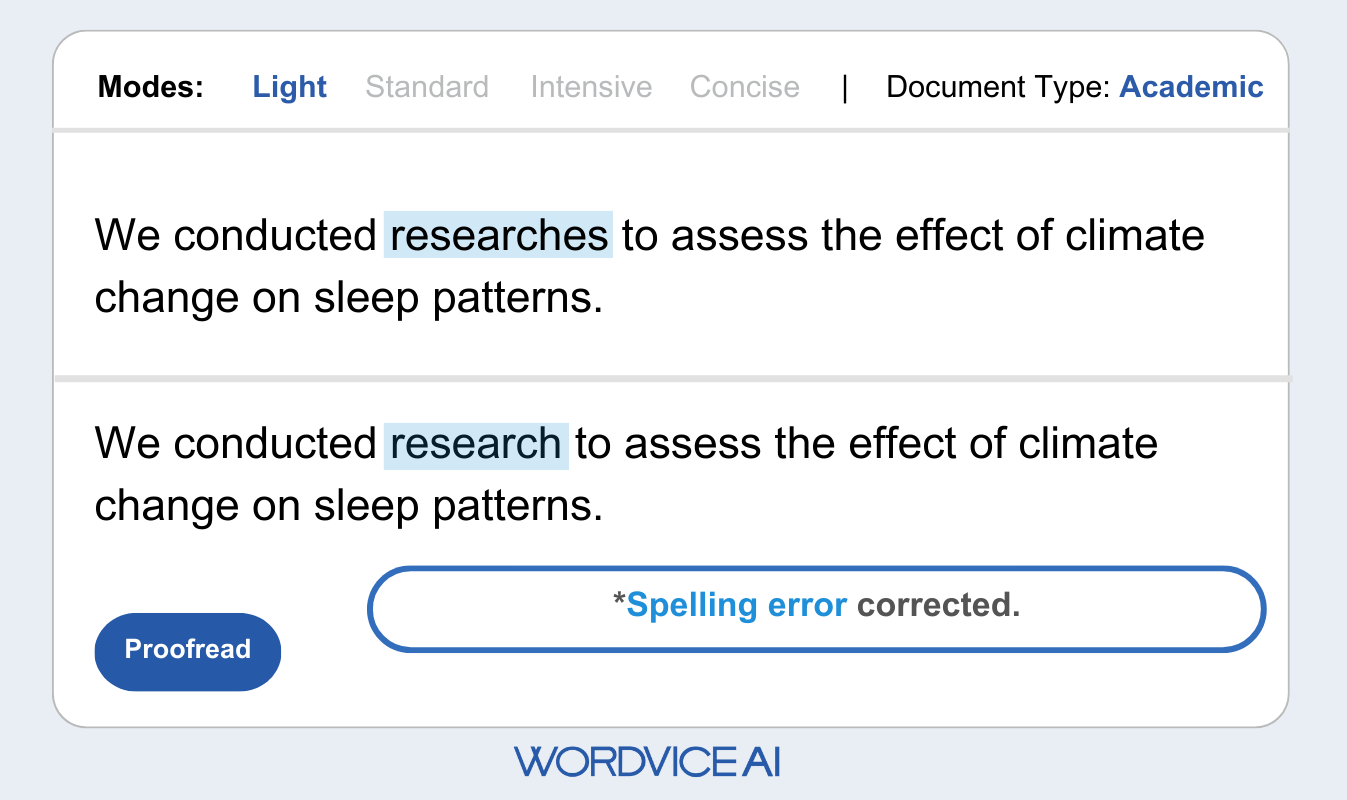Commonly Confused Words in Research Writing | Examples
Proper word choice is important in academic writing, as its main goal is to explain ideas or research findings as accurately as possible and to persuade readers that a theory or conclusion is correct. There are words that should be avoided altogether in academic texts, but others are simply misused or confused.
This list (with examples) will help you distinguish between some of these pairs that look or sound similar or seem to have the same meaning—it is not comprehensive but will give you an idea what to look out for when revising your own texts. A glossary of research terms can also help you avoid confusing words and phrases. And if you want to get professional input before you submit or hand in a paper, you can of course also make use of our Editing and Proofreading Services or our Paper Editing Service to perfect your writing.
Thus vs Therefore
"Thus" and "therefore" are both adverbs used to indicate a logical result or conclusion. "Thus" is typically used to present a result that follows logically from what has just been mentioned, often in a more formal or structured context. "Therefore", on the other hand, is more flexible: it can be used interchangeably with "thus," but it often carries a slightly stronger sense of causality or consequence. The choice between them is often a matter of style and preference, but "therefore" is preferred when emphasizing a clear cause-and-effect relationship.
Thus vs Therefore examples
Thus: The experiment showed consistent results; thus, we can conclude that our hypothesis is accurate.
Therefore: The road is closed due to heavy snowfall; therefore, we should take an alternate route to reach our destination on time.
Which vs That
"Which" and "that" are both relative pronouns used to introduce clauses that provide additional information about a noun. "Which" is used in non-restrictive clauses, which provide extra, non-essential information, and are set off by commas. In contrast, "that" is used in restrictive clauses, which are essential to the meaning of the sentence and are not separated by commas.
Which vs That examples
Which (non-restrictive): My car, which is red, is parked outside. (The color of the car is extra information, and the sentence would still make sense without it.)
That (restrictive): The car that is parked outside is mine. (The phrase "that is parked outside" is essential to identify which car is being referred to; without it, the sentence lacks clarity.)
Affect vs Effect
These two are another example of frequently confused words: "Affect" is typically a verb, meaning to influence or have an impact on something. "Effect", on the other hand, is usually a noun referring to the result or outcome of an action.
Remember the mnemonic: "Affect" is an Action (both start with 'A'), while "Effect" is the End result (both start with 'E').
Affect vs Effect examples
Affect (verb): The bad news affected her deeply, causing her to feel sad all day.
Effect (noun): The positive effect of regular exercise is improved health and increased energy.
Among vs Between
"Among" is used when discussing three or more items or when referring to a group in a collective or indistinct way. "Between" is used when discussing a relationship or comparison involving two distinct, individual items or groups.
Among vs Between examples
Among (three or more): The treasure was divided among the four friends.
Between (two): The decision needs to be made between the two job offers.
Attribute vs Contribute
"Attribute" is a verb or noun used to assign credit or responsibility to a specific source or cause, while "contribute" is a verb that means to give or provide something, often in the context of adding to a larger whole or actively helping a cause.
Attribute vs Contribute examples
Attribute (verb): She attributes her musical talent to her years of practice.
Contribute (verb): Many people contributed to the success of the fundraising event by donating their time and money.
Imply vs Infer
"Imply" is a verb used when someone indirectly suggests or conveys a message without stating it explicitly. "Infer", in contrast, is a verb used when someone deduces or draws a conclusion based on evidence or information presented. Note that the person making the inference is the one drawing the conclusion based on what is implied by someone else.
Imply vs Infer examples
Imply (speaker): She didn't say it outright, but her words implied that the project was behind schedule.
Infer (listener): From her words, I inferred that the project was not going as planned.
Whether vs If
"Whether" and "if" are both used to introduce conditional clauses, but there's a subtle difference between these confusing terms: "Whether" is used when presenting two or more alternatives or indicating a choice between possibilities, while "if" is used to introduce a conditional statement or to express a condition or supposition.
Whether vs If examples
Whether (choice): I'm unsure whether I should order pizza or pasta for dinner tonight.
If (condition): If it snows tomorrow, we'll go sledding in the afternoon.
Fewer vs Less
"Fewer" and "less" both relate to quantity, but they are used in different contexts. "Fewer" is used when referring to countable items or things that can be individually quantified, such as people or objects. "Less" is used when talking about an uncountable or abstract quantity, like time, money, or a substance.
Fewer vs Less examples
Fewer (countable): There are fewer books on the shelf today.
Less (uncountable): I have less sugar in my coffee than usual.
Principal and Principle
"Principal" refers to a person who holds a high position or the main amount of money in an account. "Principle" refers to a fundamental truth or rule. Confusing these two can lead to misdescriptions of studies or misinterpretations of scientific findings.
Principal and Principle examples
Principal (person): The principal investigator led the research team.
Principle (fundamental rule): The principle of conservation of energy was applied in this study.
Correct Commonly Confused Words with Wordvice AI
One way of checking your text for the misuse of frequently confused words is using our AI writing assistant, which corrects and paraphrases your text (and thereby also makes it more compelling): Simply paste parts of your text into the left-hand box of the AI Proofreader and click on the flagged errors—the corresponding feedback box explains to you why something is wrong and how to correct it:

The AI Proofreader will of course detect many other commonly confused words and other mistakes that are not included in this list.

You can also play around with the level of editing the tool applies (light - standard - intensive - concise) or let the AI Paraphrasing Tool provide you with alternative wording to make sure your text is free of errors and ambiguities.



